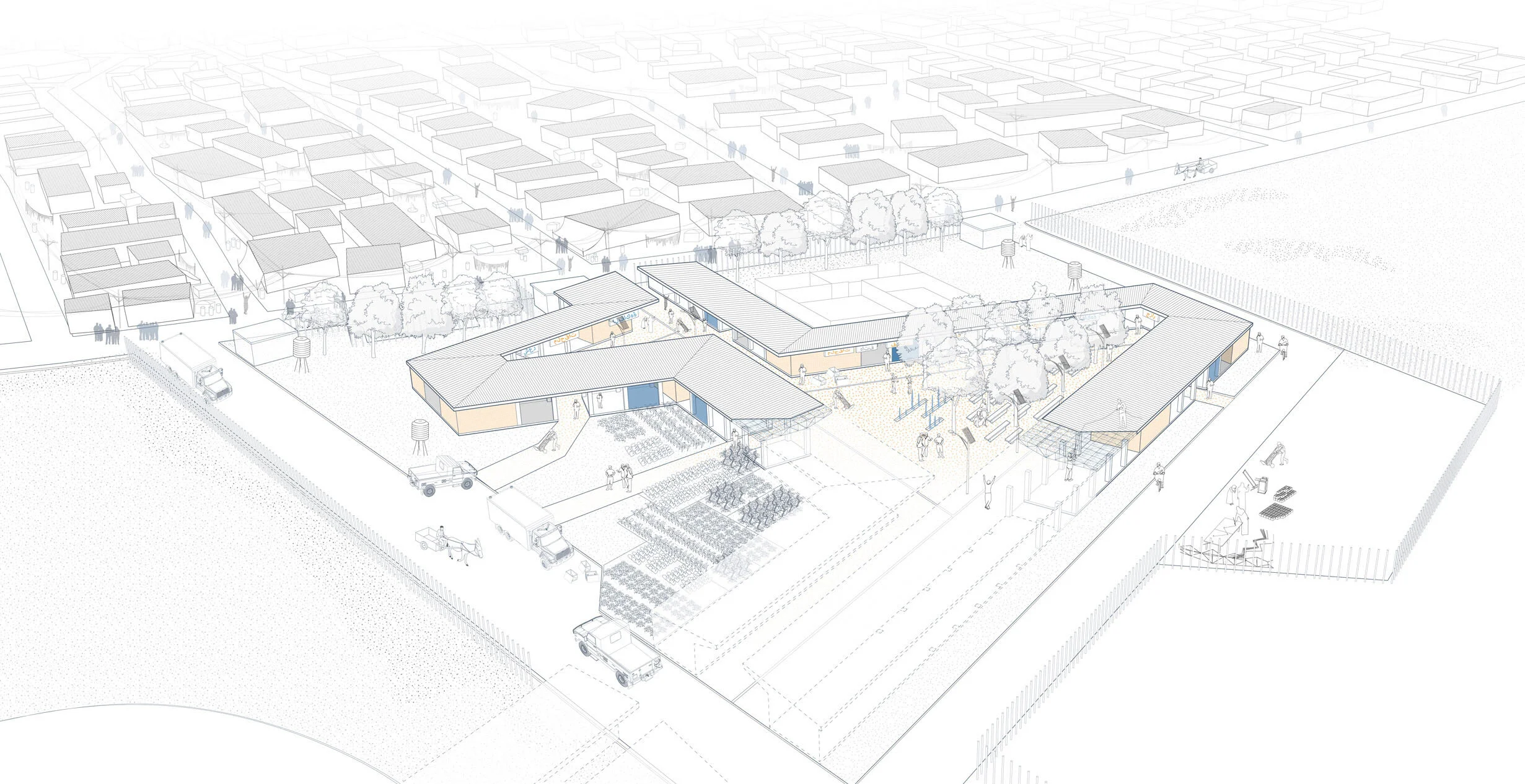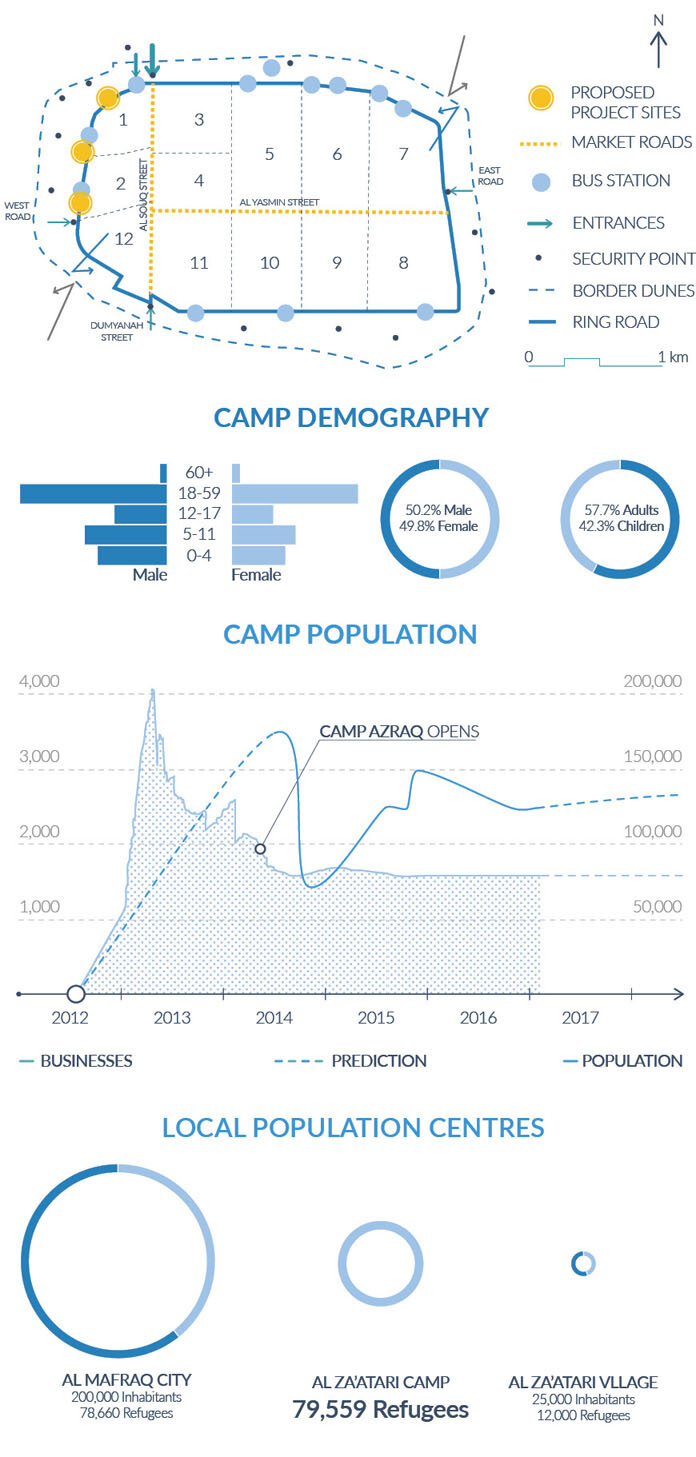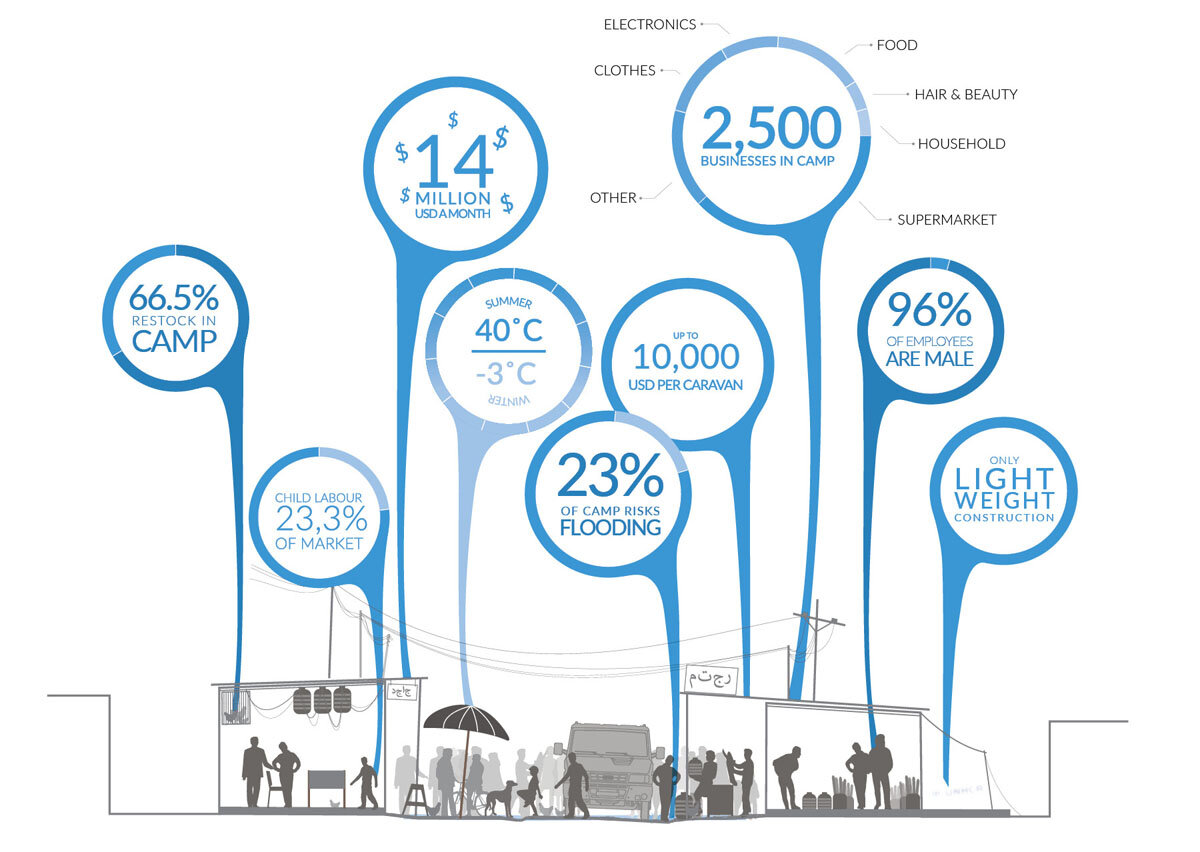Zaatari camp, located 16 km away from the border with Syria in Mafraq Governorate, has been identified as the fourth largest refugee camp in the world, and the fourth largest human settlement in Jordan.
Since 2012, months from its opening, refugees have set up a fast-growing economy through informal market activities, which today counts over 2,500 businesses.
Residents mainly trade in food, electronics and clothes, but have also set up hair and beauty salons, travel agencies and even a wedding dresses rental store. The market shops develop along two main roads and secondary streets. Despite positive outcomes, such as building a sense of community and pride, and indeed a better source of income for refugees, the existing market does not improve the economic situation for Jordanians and Syrians who live outside the camp.
Even if a third of the goods are sourced from the nearby city of Mafraq and the Zaatari Village, 66.5% of the goods remain restocked within the camp. Freedom of movement in and out of the camp is highly limited and controlled.
A permit for refugees to temporary leave the camp requires days to be obtained, whilst Jordanians are not admitted inside, except for those who work in the camp. In addition to this, a lack of public spaces inside and outside the camp does not seem to create an adequate social integration between refugees and host population.
Outside the camp: Nearly 80,000 Syrians refugees live in the camp, whilst 12,000 live in the nearby Zaatari village (half of the village are refugees), which has experienced an urban growth since the establishment of the camp. Many of the refugees living in the village share preexisting tribal connections with their Jordanian hosts. The approach of aid agencies is changing progressively, aiming at creating a model that allows refugees to lead an independent life.
Inside the camp: Permits from Jordanian authorities to refugees to move more freely in and out the camp are increasing. In addition to this in July 2016 the Jordanian government and the EU has signed an agreement where 200,000 jobs permits for refugees will be created.
With $14 million dollars generated each month, along with the creative and vibrant skillset of the camp’s residents, the local economy inside the camp may not be seen just a parallel closed economy for the host population, but primarily as an opportunity to provide more job prospects for Jordanians who live in the region, as well as an opportunity for a social integration between host population and refugees. In addition to this consideration, an increasing number of humanitarian and development actors agree on the necessity to change the approach of the support given to refugees that so far obliges them to rely completely on aid, to a more inclusive, self-reliance model.
The objective of our proposal is aimed at the creation of a market place which indeed will be a common ground for trade and livelihood opportunities for Jordanian, as well as Syrians living both in the camp and the village. Another important objective is aimed at an improved social integration of women and youth, as well as between host population and refugees, as targeted vulnerable groups.
Location: Al Mafraq, Jordan
Competition
Project team: Andrea Panizzo, Anna Calogero, Gianluca Stefani, Edoardo Paoletti, Alex Borrel, Matthieu Courtade.




